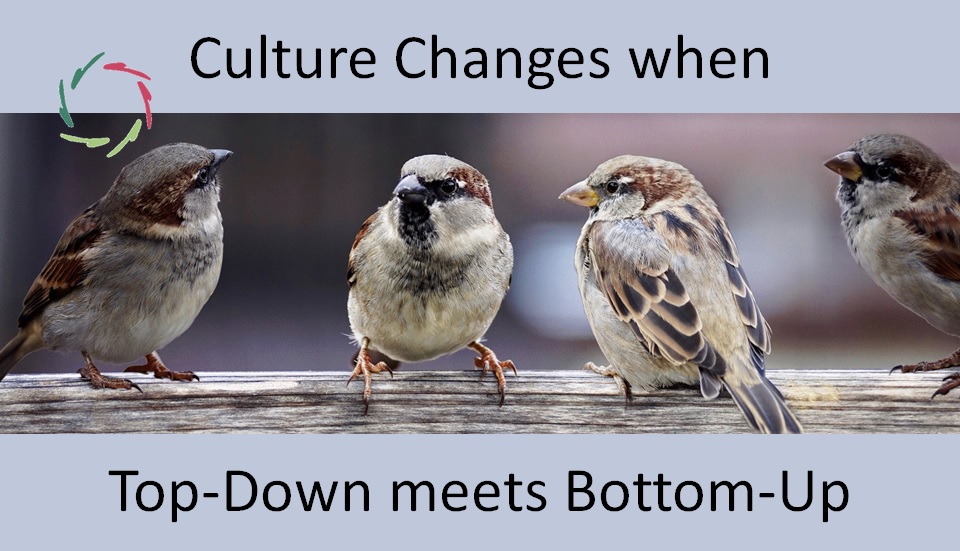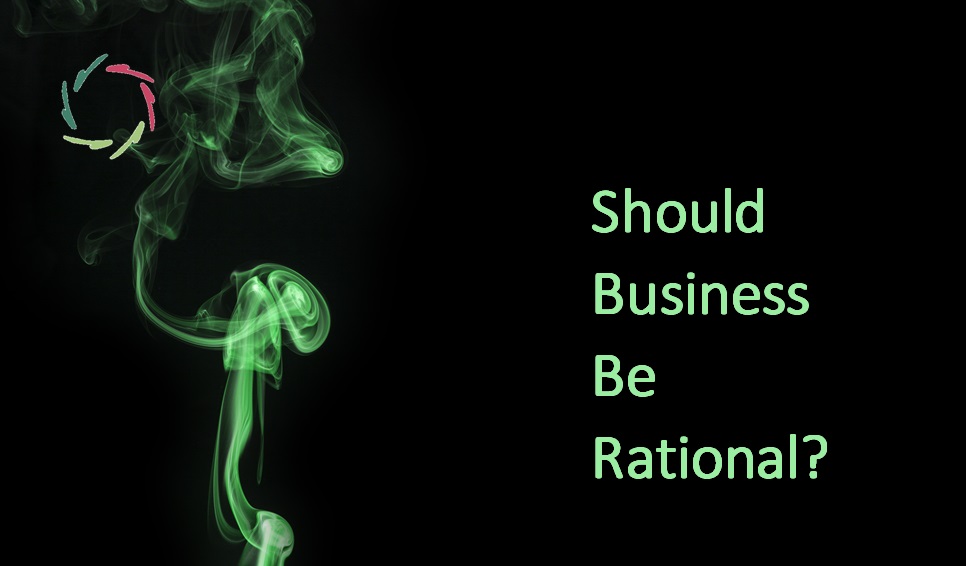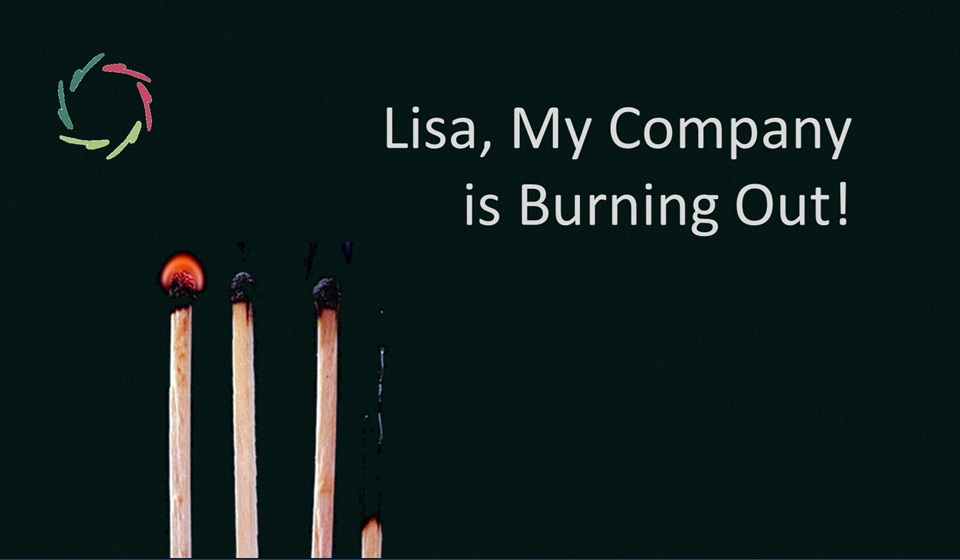Culture Changes when Top-Down meets Bottom-Up

Not separately from each other, but intertwined and as though mutually attracted ― making it personal.
Sustainable change is culture change.
Top-down
(through rules and regulations, encompassing changes on a big scale)
This may work when also being carried from the bottom up. This means that rules should only be enacted after the bottom-up has been explored. This way, less rules may be needed. Also, necessary rules are less felt as being imposed by authority and more as a sheer necessity.
The ideal is that people agree on rules through feeling them not as rules but as straightforward parts of the sociocultural environment.
For instance, if rules are needed to let the planet survive, they are part of the planet itself and of the socio-cultural environment making the planet’s natural – and human-friendly – endurance possible in the first place.
Bottom-up
A culture changes when many people change. People change from the inside out. This is also how they can be motivated.
‘From inside out’ means through overlap either from one person (leader figure symbolizing the group/culture) or from many others (being the group/culture).
Culture change is proficient in that people can help each other change from inside ― if you let them. As a leader, the main thing may be your not standing in the way.
Making it personal
Animals are made to take things personally. For instance, when a fox chases a rabbit, you may be sure it’s personal. Also, when this rabbit eats this carrot while being on the lookout.
People are like animals in taking things personally. If you don’t make motivation personal, it hardly works ― also when the aim is culture change.
Most personal is personal in the here and now. That’s the time and place the person is alive. Therefore, that’s where and when it matters. Think fox and rabbit.
Top-down-bottom-up
Within the personal, both directions should best be integrated as much as possible. Although both are separately needed, they should come together as in one flow.
This is not an easy accomplishment. Most needed is proper communication: listening and responding ― optimal coaching at the culture level.
This way, they ‘fill the landscape.’ Each person, being immersed in this, rather spontaneously goes with the flow. This may sound idealistic. It happens time and again with excellent efficiency if the communication is correct.
Leadership responsibility
It’s a leader’s responsibility to make it each person’s responsibility within the given culture. That’s the only way it can happen.
True leaders are always also leaders of culture.
They don’t just change for the change.
They change cultures from the inside out for durability’s sake.


